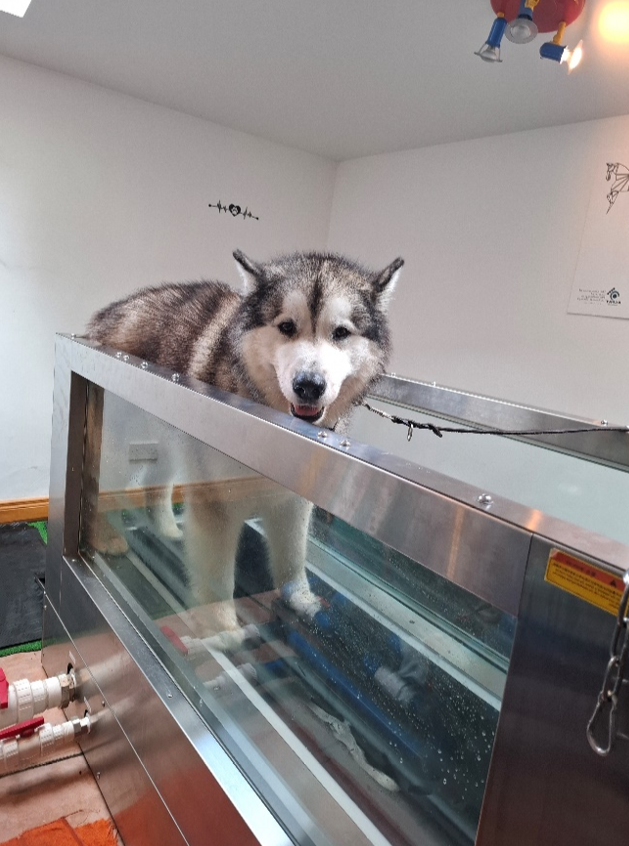Physiotherapy and Hydrotherapy Management of Fibrocartilaginous Embolism (FCE)
- Vet
- Jun 6
- 3 min read
FCE presents as a sudden onset spinal cord injury caused by a blockage in a blood vessel supplying the spinal cord, typically by a piece of cartilage from an intervertebral disc. This can lead to paralysis or weakness, especially in the hind limbs, and commonly seen large and giant breeds. FCE is a non-surgical disease of the spinal cord.
Rehabilitation has a huge role to play in managing dogs diagnosed with FCE. Maintenance of physical function and prevention of secondary compensatory changes is vital to your dog making good progress throughout the rehabilitation process. The level to which a patient is affected by the FCE will vary from dog to dog. Ongoing re-evaluation is essential to allow an effective and appropriate treatment course that is adapted to the individual patient..
Physiotherapy aims
In the initial stage following diagnosis, the aims are as follows:
Maintain soft tissue flexibility
Prevent muscle spasm
Provide sensory stimulation
Provide supported means of mobility
Depending on your dog’s progress, the aims might then progress to:
Improving core stability
Improving body awareness and coordination
Providing home care management advice
6 weeks on from diagnosis your chartered physiotherapist would aim to:
Strengthen core stability
Improve gait pattern
Increase cardiovascular fitness
Return to normal functional activities
Physiotherapy options
Correct positioning, massage and stretches can be implemented in the early days. Laser, heat and sensory stimulation techniques complement the healing at this stage. Muscle stimulation is invaluable to maintain “at risk” muscle groups whilst your dog might be recumbent. As your dog improves, an appropriate and progressive exercise plan can be used to assist in gait re-education, core stability, strengthening and promote balance. Once your dog is recovering muscle mass and general cardiovascular fitness will continue to be improved to original levels as able. Advice regarding assisting with everyday activities will be given for injury prevention.
The following table gives an example of a rehabilitation plan for a dog recovering from an FCE:*
Timescale | Physiotherapy aims | Treatment options |
0-2 weeks | Reduce potential risk of soft tissue trauma Reduce muscular guarding Increase sensory input and motor activity Possibly gait re-education according to deficits Improve core stability Increase sensation and awareness of body position |
|
2-4 weeks | Maintain soft tissue length and flexibility Management at home |
|
4-6 weeks | Continue and progress as above |
|
6-12 weeks | Increase exercise tolerance Improve function |
|
12 weeks + | Return to full function or establish deficits and advise regarding long-term management. |
|
*Please note that rehabilitation plans should only be followed under the guidance of a qualified rehabilitation professional, who will be able to provide a tailored plan based on the individual patient’s rehabilitation needs.
Hydrotherapy options
Our underwater treadmill is a useful tool for assisting with gait re-education. The warm water provides support to the patient and allows effective gait training. For longer term management, the hydrotherapy treadmill is used to restore muscle strength and cardiovascular fitness.



Comments